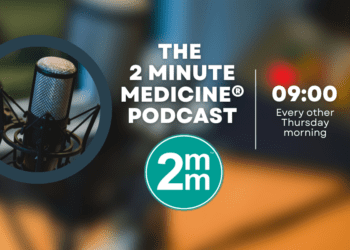Zoliflodacin (ETX0914) effectively treats urogenital gonorrhea
1. Patients with uncomplicated urogenital gonorrhea treated with the novel antibiotic zoliflodacin, developed in part due to increasingly antibiotic resistant gonorrhea, were cured at rates similar to that seen in patients treated with ceftriaxone.
2. Patients with pharyngeal gonorrhea infection appear to be cured at a higher rate when treated with ceftriaxone compared to zoliflodacin.
Evidence Rating Level: 2 (Good)
Study Rundown: Gonorrhea is being diagnosed in the United States at increasing rates, while at the same time many strains are becoming resistant to drugs commonly used for treatment. Zoliflodacin is a novel antibiotic which works by inhibiting DNA synthesis, different from currently used antibiotic regimens, and has been shown effective in vitro when evaluated in strains of ciprofloxacin and ceftriaxone resistant gonorrhea. Zoliflodacin also has shown activity against chlamydia and mycoplasma species. This phase 2 trial evaluated the efficacy of single dose oral zoliflodacin compared to intramuscular ceftriaxone for the treatment of uncomplicated urogenital gonorrhea. The primary outcome, microbiologically determined cure at 1 week, was similar for patients with uncomplicated urogenital gonorrhea treated with either zoliflodacin or ceftriaxone. Patients with pharyngeal gonorrhea were cured at lower rates when treated with zoliflodacin compared to ceftriaxone.
The study confirmed the feasibility of utilizing zoliflodacin for the treatment of urogenital gonorrhea. Its strengths include its randomized and multicenter design, determination of cure by microbiologic testing, and collection of patient gonorrhea isolates for further testing. Limitations include its limited number of patients included, low number of included women, and limited cases of rectal or pharyngeal gonorrhea.
Click to read the study, published today in NEJM
In-Depth [randomized controlled trial]: This phase 2, multicenter, randomized controlled trial enrolled patients between 2014 and 2015. Eligible patients were between 18 and 55 with signs or symptoms of urogenital gonorrhea, untreated gonorrhea, or sexual contact within the last 14 days with a person with gonorrhea, and abstained from sexual contact for 7 days after treatment. Patients with complicated gonorrhea were excluded. Patients were randomized to receive zoliflodacin in a 2g (n=57) or 3g (n=56) oral dose, or 500mg of intramuscular ceftriaxone (n=28). Samples were obtained from all patients prior to treatment at urethral/cervical, pharyngeal, and rectal sites and underwent nucleic acid amplification testing (NAAT). Patients were then tested at the same sample sites both approx. 7 and 31 days after treatment. The primary outcome, NAAT determined urogenital cure at 7 days, was present in 96% of both of the zoliflodacin groups and 100% of the ceftriaxone groups. Among patients with positive pharyngeal samples, 4/8, 9/11, and 4/4 patients were cured at 1 week when treated with 2g zoliflodacin, 3g zoliflodacin, and 500mg ceftriaxone, respectively. The most common adverse events reported by patients taking zoliflodacin included self-limited gastrointestinal symptoms.
Image: PD
©2018 2 Minute Medicine, Inc. All rights reserved. No works may be reproduced without expressed written consent from 2 Minute Medicine, Inc. Inquire about licensing here. No article should be construed as medical advice and is not intended as such by the authors or by 2 Minute Medicine, Inc







